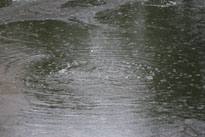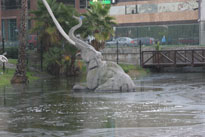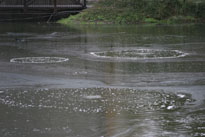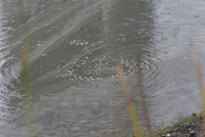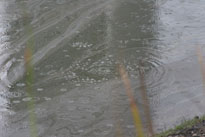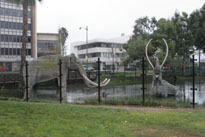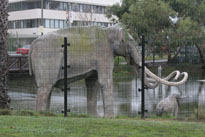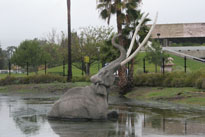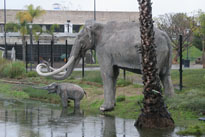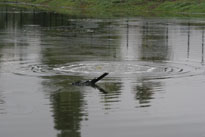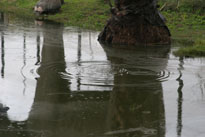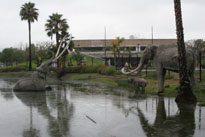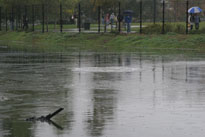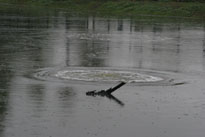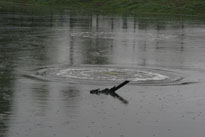
Click on any picture to see the full size image.
Numerous excavations have been undertaken within the La Brea Tar Pits, some to depths of 35 feet or more. These sites have since been refilled, though each continues to ooze tar to this day. In these photos, notice the sheen of petroleum on top of the foul water in each photo and the black, viscous goo that has accumulated on anything in the pits. Natural gas (methane) also bubbles to the top through faults and cracks in the underlying crust. The smell of the entire area is quite distinctive - in an amazing coincidence, hydrogen sulfide accompanies the natural gas, an odor exactly the same as processed natural gas!


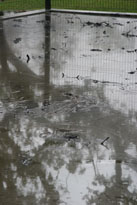

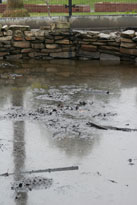

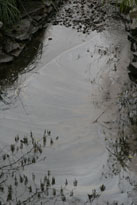
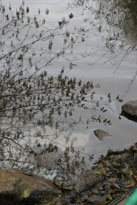

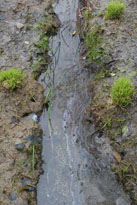
Pit 91 is the only currently active excavation within the La Brea area, and even this site is only worked during the summer months due to limited funding. There is an observation area for visitors when workers are actually present.

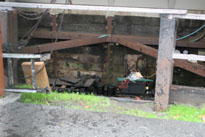
Though millions of fossils have been recovered from within the tar pits, only a few hundred are actually on display, and most of those are right here in the Page Museum. One can easily spend three hours just inside the museum building itself, where both self-guided and docent-guided tours as well as two movies provide background on the history of the tar pits and the science behind them.


Right in front of the Page Museum is the largest pit, where an amazing volume of natural gas bubbles, blurps and erupts from a very stinky pond. In the photos, notice the concentric rings generated by the uneven flow of methane bubbles within the pond. Also observe the obvious petroleum slick on the water's surface, as well as the models of a Columbian mammoth family, one of whom has become stuck in just a few inches of tar. In a cruel irony, it is not the tar which kills the trapped animal (it's not like quicksand; you do not sink). Instead, the animal's cries for help attract predators, which themselves get stuck in the tar while gorging on their meal. The smaller predators then attract buzzards, and in turn, carrion insects which themselves all become firmly stuck in the tar. Because the tar also traps trees, leaves, branches, and other microfossils, entire ecosystems can be deduced from these mass trappings.
